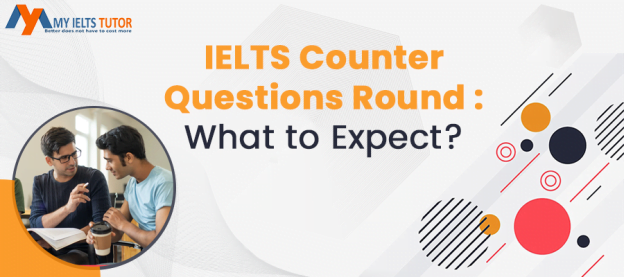Your cart is currently empty!
Category: General Training
6 Ways to boost your IELTS Listening Band Score from 6 to 8 Band
After having a brief of how the questions appear in the IELTS exam’s actual listening test and how they are classified in different parts, students must be aware of ways to tackle them. This module of the test includes the audio recordings played only once. You will not hear them twice; therefore, I will reveal a few secret tips to boost your scores of IELTS Listening and get a perfect band 9.
Time Management
During the listening exam, my students frequently comment that they don’t have enough time to look at the questions or write responses. In the listening exam, it is critical to use your time carefully. Because all students have the same amount of time, students who manage their time well will receive higher grades than students who do not. Take note of how much time is given to you in the instructions: “Now have some time to look at questions 20 to 24” OR “Now you have half a minute to check your answers. ”When it comes to time management, understanding questions quickly and knowing what to listen for is essential.
Be attentive
However, the IELTS Listening difficulty rises as the students proceed with questions, but the examiner also allows cracking answers using indicators and plugins. The examiner uses certain words like however, but, finally, that helps anticipate the speaker’s idea. Try to acquire a sense of what’s going on. You’ll get a short introduction before each part, which is essential to note. It appears for example: ‘Now, you’ll hear a chat between…’ or ‘Now, you’ll hear a lecture on…’ Be aware that this information is not mentioned on the question paper.
Please note who is speaking, why they are talking, and where they are located. Such parameters will make the rest of the tape much more accessible for students to comprehend.
Avoid Distractors
Being attentive and avoiding distractions works hand in hand because the examiner induces several types of distractors in the IELTS Listening Test. Distractors are most commonly seen in dialogues, where one speaker says something and the other speaker corrects him or her. In order words, you’ll hear two different versions of the identical piece of information. One is correct, and the other is erroneous, and if you don’t pay attention, it’s obvious to write the incorrect one. Another example of the examiner distracting students is by setting traps using similar keywords the wrong way in the audio. These distractors may cause you to make dumb errors on the test, so be prepared to deal with them on test day. Avoid them to improve your IELTS Listening scores.
Have Patience
The examiner plays the audio once; therefore, make sure to understand the idea, listen to the correct word in their singular or plural forms, have eyes peeled on questions, and most importantly, write the correct spellings. Doing all such tasks at once can make students impatient. They also tend to lose on listening to some part of the recording and hence miss on questions. You can also be on their part, so be patient whether you miss one question as there is a long way to go. You have the rest of the questions to respond precisely to boost your listening test bands.
Instructions
As mentioned earlier, Instructions are essential to answer the correct way. If you do not follow the examiner’s prescribed guidelines, your answer will not be given attention while marking.
Correct Spellings
Writing the answers to your IELTS listening module with correct spellings is as essential as getting them right. For instance, the speaker in the audio meant ‘principal’, but the answer is incorrect when you write ‘principle’. You heard the examiner right yet misinterpreted the meaning. Some most commonly repeated words appear in the IELTS exam; practice them to avoid errors such as incorrect spellings.
The students can point out these mistakes while practicing for the IELTS exam to improve listening scores. However, be aware of the types of questions appearing in the IELTS Listening section for a perfect band 9.
Wait a minute, Do you need 8+ bands in IELTS Listening?
If yes, How many questions must be correct?
IELTS Listening Band Calculator
must read – Mastering IELTS ListeningEach Question carries 1 mark Marks obtained Bands 39-40 9 37-38 8.5 35-36 8 32-34 7.5 30-31 7 26-29 6.5 23-25 6 18-22 5.5 16-17 5 13-15 4.5 11-12 4 Now that you know how many marks you require as per the band desirability. The following is the IELTS exam question list, and you may encounter some of them in your actual IELTS test. Jot down the ones you find easiest to score as per your overall IELTS band requirement.
Types of Questions appearing in the IELTS Listening test
Although there are only four parts to the listening test, the types of questions differ for every exam. The students may encounter some of the following mentioned questions in their real IELTS test.
- Form completion | Note completion | Summary completion
- IELTS Listening Sentence completion
- Table completion
- Flow-chart completion
- Matchings
- IELTS Listening Multiple choice questions ( MCQs )
- Map labelling | Diagram labelling
[carousel_slide id=’16536′]
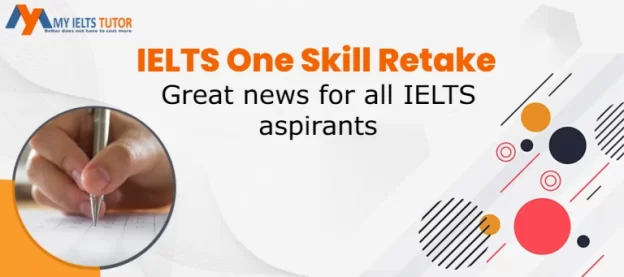
IELTS One Skill Retake
IELTS Test takers now have a chance to take their IELTS Score higher in single module
Great news for all IELTS aspirants! Test takers of the world’s most popular high-stakes language test, (IELTS), will soon have access to a new feature to help them boost the score they need to achieve their global learning and career goals.
On 28 october, 2022, The IELTS One Skill Retake test will be introduced by IDP, according to a recent announcement. If a student does not get the score they were hoping for on the first try, they will have the option to retake only one of the four skills (Listening, Reading, Writing, or Speaking) on the IELTS exam. There are still a lot of unknown concerns at this point, but it is clear that the implementation of the IELTS One Skill Retake might have a significant influence on how long it takes test-takers to get their goal scores. For instance,
- Will you be able to take the IELTS One Skill Retake once, or many times?
- What would be the cost of One skill retake?
- And will all professional bodies and governments accept the IELTS One Skill Retake certificate?
What questions do we have about the IELTS One Skill Retake?
This initial communication regarding the IELTS One Skill retake obviously raises more questions than it does answers. What is certain, though, is that IELTS has listened to test-takers and recognises the necessity of introducing the option for students to repeat just one portion of the exam rather than being required to do so.
This is crucial for children whose grades vary across modules. For instance, they could discover that their Speaking score fluctuates between a 6.5 and a 7.0, while their Writing score remains constant at a 6.5. Nothing is more upsetting for students in this situation than working so hard to get a 7.0 in writing only to get a 6.5 in speaking. Students can now “hold” their Writing score of 7.0 and merely take Speaking again. Isn’t it great. However, there are still a number of points that remain unclear:
- The initial communication said that the plan will launch in the major cities of Australia. It is unclear, however, if this is merely a prototype programme (i.e., one that is being evaluated before being implemented globally) or if they are only the first centres to provide the IELTS One Skill Retake and others across the globe will soon follow.
- There is also no mention of the test’s fee or how many times a student may take the IELTS One Skill Retake. Will it be possible to retake the test, or is this just a one-time opportunity following the completion of a comprehensive test?
- There is no word on whether the second form will be recognised by institutions other than the Australian Department of Home Affairs. Will you be able to use the IELTS One Skill Retake to seek Canadian residency? My expectation is that each of these organisations will have its own policy, so we’ll have to wait and see what happens.
Warwick Freeland, Managing Director – IELTS, IDP Education, said One Skill Retake has been introduced after listening to test taker feedback.
“With the right preparation and support, we know our test takers achieve their best score the first time around,” Mr Freeland said.
“However, we listened to our test takers and they told us they wanted the opportunity to retake one section of the test if they didn’t get the score they were aspiring for on test day,” he said.
“With One Skill Retake, test takers can get their study, migration or work applications plans back on track,” he said.”
Read also – IELTS Exam Day: A Survival Guide
[carousel_slide id=’16536′]
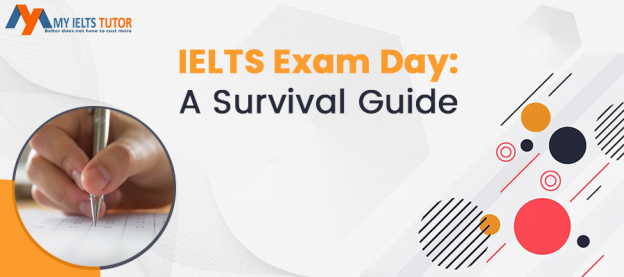
IELTS Exam Day: A Survival Guide
Are you preparing to take the IELTS exam? Whether this is your first time or you’ve taken the exam before, it’s important to be prepared for what to expect on exam day.
The IELTS exam can be challenging, but with the right preparation and strategy, you can feel confident and ready to ace it. Here are a few tips to help you make the most of your IELTS exam experience:
- Get plenty of rest the night before the test.
- Arrive at the test center early.
- Bring your original passport, colored photocopy of your passport and your test confirmation receipt.
- Read the instructions carefully.
- Answer all questions.
- Do guess – if you don’t know the answer, Do not skip it.
- Do not leave any questions blank.
Preparing for IELTS Exam Day
So, it’s exam day. You’ve been studying for weeks (or months), and you’re feeling ready. But there are still a few things you can do to make sure you’re prepared.
First, make sure you know where the test center is and how to get there. Plan to arrive early, so you can relax and get comfortable before the test starts. Dress comfortably—you’ll be spending a few hours in the room, so you’ll want to be as comfortable as possible.
Most importantly, stay calm and don’t worry. The IELTS exam is just one test, and it’s not going to determine your entire future. You’ve prepared for this, so now it’s time to put your skills to the test and see what you can achieve.
What to Expect on IELTS Exam Day
The big day is finally here! You have been preparing for months, and now it’s time to put all that hard work to the test. Here is a survival guide to help you make the most of your IELTS exam day.
First, know what to expect. The IELTS exam is divided into four sections: listening, reading, writing and speaking. You will be given a total of 2 hours and 40 minutes to complete the exam. Second, arrive early. This will give you time to relax and calm your nerves before the test begins. Make sure to bring your ID and admission ticket with you.
Third, know what to bring with you. You will need a pencil, eraser, even though it will be provided in the test Centre. For the writing section, you will need a pen and something to write on (a notepad or your laptop), however, you cannot carry any paper with you so it is recommended to use your question booklet to take notes.
Fourth, be prepared for the test. Read the instructions carefully and make sure you understand what is required of you. Familiarize yourself with the types of questions that are typically asked in each section. Fifth, do your best! Remember that it’s not about winning or losing; it’s about doing your best and learning from your mistakes. Good luck!
How to Stay Calm During the IELTS Exam
The IELTS exam is a challenging test, but with a bit of preparation and some positive thinking, you can stay calm and focused during the exam. Here are some tips to help you stay calm:
- Get a good night’s sleep before the exam.
- Eat a healthy breakfast on the day of the exam.
- Arrive at the test center early so you can relax and prepare yourself mentally for the exam.
- Stay positive and focus on your goals.
- Take a few deep breaths and relax before starting the exam.
How to Avoid Making Common Mistakes on IELTS Exam Day
You’ve studied hard and you know the material inside out. You’ve even practiced under exam conditions. But on the big day, it’s easy to let your nerves get the better of you. Here are some tips to help you avoid making common mistakes on IELTS exam day:
- Arrive early. This will give you plenty of time to relax and calm your nerves.
- Make sure you have everything you need, including ID and your passport/photo ID.
- Read the instructions carefully and make sure you understand what’s required of you.
- Answer the questions in the order they’re written, and make sure your handwriting is clear and legible.
- In task 1, spend no more than 20 minutes on the letter, and no more than 40 minutes on the report.
- In task 2, spend no more than 40 minutes on the essay.
- Pace yourself, and remember to take a break if you need it.
- Finish strong and leave a few minutes to check your work.
What to Do if You’re Not Feeling Well on IELTS Exam Day
If you’re feeling sick on the day of your IELTS exam, don’t worry—you’re not alone. In fact, a lot of people get sick during the exam. But don’t let that stop you from getting the score you want.
If you can, try to drink plenty of fluids and get some rest the night before. And if you’re feeling really ill, it’s probably best to reschedule your exam. But if you can’t do that, here are a few tips for dealing with sickness during the test:
- Drink lots of fluids, preferably water or juice.
- Avoid caffeine and alcohol, which can make you feel worse.
- Try to get some rest the night before.
- Bring fever-reducing medication with you to the test, just in case.
- You do have option to postpone the test date for which you need to visit IDP office with valid proof and yes! extra charges are to be paid to IDP.
Conclusion
You’ve made it to the big day! Whether you’re feeling excited or nervous, just remember that you’ve been preparing for this for weeks (or maybe even months). Here are a few final tips to make sure your IELTS exam goes as smoothly as possible.
- Get to the test center early. This will give you time to relax and calm your nerves.
- Make sure you have everything you need – including your passport or ID and admission ticket.
- Read the instructions carefully before beginning the test.
- If you have any questions during the test, raise your hand and the invigilator will help you.
- Don’t worry if you finish early – just relax and wait for the end of the exam.
- When you’ve finished, make sure you hand in all your materials and leave the room quietly.
Good luck – we know you can do it!

Mastering the IELTS Listening Section
You’re preparing to take the IELTS listening section, and you want to do your best.
But there’s one thing you’re not sure about: what the test is like. It can be tricky to know what to expect, especially since the listening section is completely audio-based. In this post, we’ll give you a little taste of what to expect on test day.
You’ll learn about the different types of questions that appear on the IELTS listening section, as well as some tips for how to approach them. We’ll also show you a sample question and answer so you can get a feel for the format of the test. Let’s get started!
What Is the IELTS Listening Section?
- The first two components of the exam address social demands.
- The following two parts deal with circumstances that are more directly tied to educational or training environments.
- All of the IELTS listening themes are of broad interest, regardless of what disciplines you intend to study or what profession you aim to pursue.
- A range of English accents and dialects are used in the recordings which reflects the international usage of IELTS
Lets Understand About Each Section In IELTS Listening
Part 1
There is a dialogue between two speakers in the first segment. For example, a discussion regarding trip plans, reserving accommodations, or enquiry
Part 2
The second part is a monologue (a speech by one person). It will be situated in a typical social setting. A lecture on student services on a university campus, for example, or dining arrangements during a conference.
Part 3
The third part is a dialogue between up to four persons. A talk between a tutor and a student concerning an assignment, for example, or between three students organising a research project.
Part 4
The final section is a monologue. It is a general academic lecture or talk, such as a university lecture
The IELTS Listening Section is a crucial part of the test. This is the section where you listen to audio recordings and answer questions based on what you hear. It’s important to prepare for this section so that you can do your best on test day.
There are a few things you can do to prepare for the IELTS Listening Section. First, make sure you’re aware of the format of the test. The questions will be based on four different recordings, so make sure you know what to expect.
Also, practice listening to English audio recordings. This will help you get used to the sound of English and the accent of the speakers. And lastly, review the types of questions that will be asked in the IELTS Listening Section. Knowing what to expect will help you stay calm and focused on the task at hand.
IELTS Listening Tips and Tricks
So you’re taking the IELTS exam and you’re feeling a little bit nervous about the listening section? don’t worry, you’re not alone.
The good news is that there are a few tips and tricks that can help you ace this section of the test.
- First, it’s important to understand the types of questions that will be asked. There are four main question types: multiple choice, short answer, sentence completion, and table completion. Familiarize yourself with the types of questions and what the answers might look like.
- Next, practice, practice, practice! The more you listen to English, the better you’ll be able to understand it when it’s played back to you in a test setting. Try to find audio files that are relevant to your interests—news broadcasts, podcasts, interviews, etc.—and listen to them regularly.
- Finally, stay calm and focus on the task at hand. Listen closely to each question and make sure you understand what’s being asked before you begin answering. If you get stuck on a question, don’t panic—there’s no time limit, so take your time and try to answer as best as you can.
IELTS Listening Common Mistakes
It’s important to be aware of the most common mistakes people make in the IELTS Listening section, because these can really hurt your score. Here are some of the most common ones:
Not paying attention to the question: Make sure you read the question carefully and understand what is being asked before you start listening.
Not listening carefully: This is a big one – make sure you listen to every word to get all the information you need.
Not using proper format to transfer the answer – While transferring the answer use clear handwriting. it is preferred to use capital letters and using proper space where required. You should how words are counted in Listening test
Not Reading the instructions– It is important to read instructions to be aware about the word limit.
Answering the question without listening: This happens when you hear the answer to a question and just start writing without actually listening to the audio. Make sure you wait until you’ve heard all the audio before writing your answer.
Not writing everything down: It’s very important to write everything down, as there will be questions later based on information in the audio.
Not transferring answers onto the answer sheet: This is another common mistake – make sure you copy your answers onto the answer sheet correctly.
If you can avoid making these mistakes, you’ll be well on your way to achieving a great score in the IELTS Listening section!
IELTS Listening Practice
It’s no secret that the IELTS Listening section can be tricky. But with a little practice, you can master it. Start by listening to the recordings a few times. Pay attention to the details and try to anticipate what’s going to happen. Then, answer the questions as quickly as you can. Don’t spend too much time on one question—just focus on getting the answer right.
Finally, don’t forget to practice vocabulary and idioms that are commonly used in the IELTS test. This will help you understand the questions and answers better. With a little bit of practice, you’ll be able to ace the IELTS Listening section!
IELTS Listening Score Calculator
So how can you figure out your IELTS listening score?
Well, there’s a handy band descriptor will do the job for you. Just check in your test score and it will give you an estimate of your band score. Pretty nifty, huh?
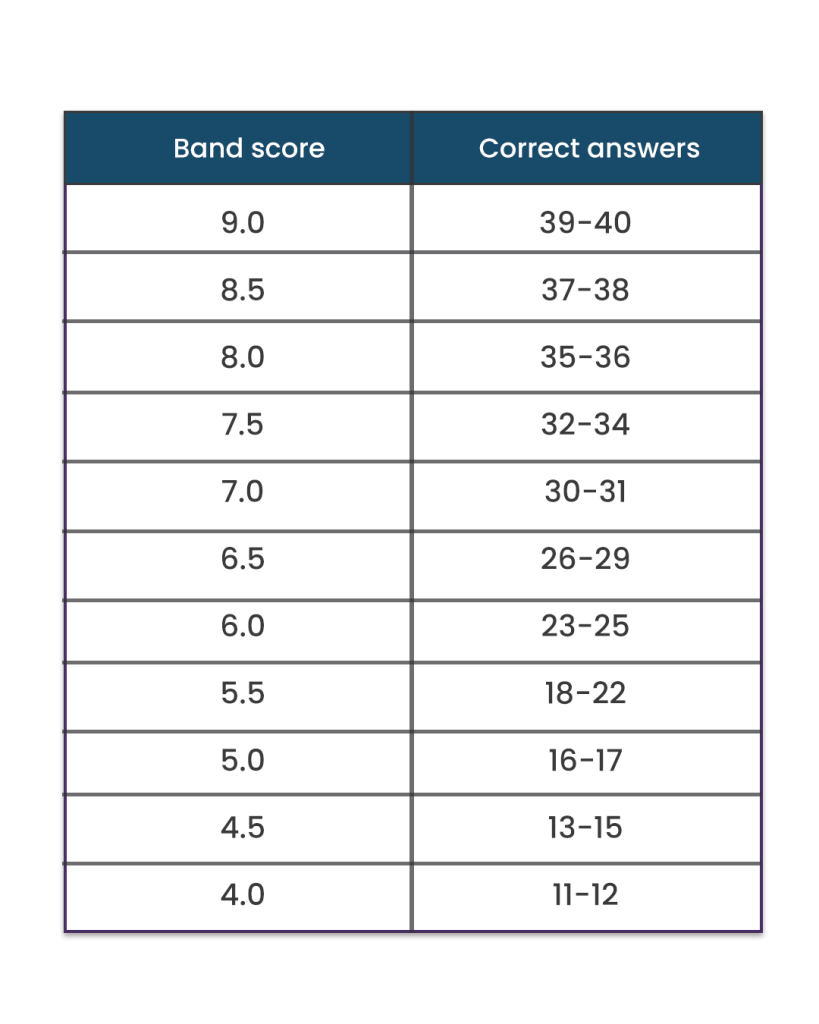
This Listening score chart can help you keep track of your progress.
Question Types
The following types of question may appear on the test:
- Multiple choices
- Fill ups
- Short Answers
- Classifications
- Maps
- Flow chart/ Table/summary completion
- Diagram labelling
IELTS Listening Tips for Specific Sections
In the IELTS listening section, you’ll be asked to listen to a variety of different types of audio content. This might be a conversation between two people, a lecture, or a presentation.
To score well in this section, you’ll need to be able to understand the main points of the audio and answer the questions accurately. Here are a few tips to help you master the IELTS listening section:
- Listen carefully and don’t worry if you don’t understand everything at first. The questions will help you focus on the most important information.
- Try to anticipate what might be asked based on the question stem. This will help you save time when answering the questions.
- Pay attention to the details in the audio and make sure your answers are correct.
Conclusion
You can pass the IELTS listening section with flying colors by following a few simple tips. Be sure to familiarize yourself with the type of questions you’ll be asked, and practice as much as possible. Stay calm and focused, and read the questions carefully. With a little preparation, you can easily score high on the IELTS listening section. Good luck!
[carousel_slide id=’16536′]
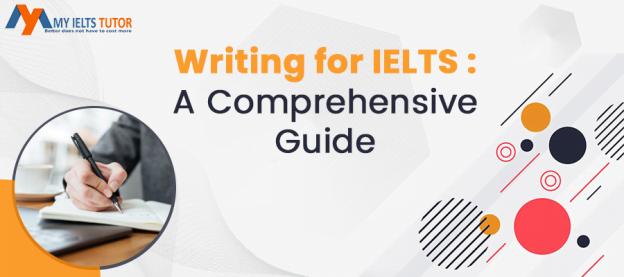
Writing for IELTS: A Comprehensive Guide
In this comprehensive guide, we’ll go over all aspects of the IELTS writing test. We’ll discuss the different types of essays you’ll be asked to write, and provide step-by-step instructions for how to write each one. Plus, we’ll give you tips and advice for staying motivated and overcoming writers’ block.
So whether you’re a beginner or an experienced IELTS writer, this guide has something for you. Let’s get started!
What Is the IELTS Writing Test?
The IELTS Writing Test is a test of your ability to write in English. You will be asked to write two essays: one Task 1 and one Task 2.
Task 1 is a letter For general training students and report for academic students . Task 2 is an essay on a more challenging topic.
The test is designed to assess your ability to communicate information, ideas, and arguments in writing. It is also designed to assess your ability to respond to questions and criticism about your writing.
Why Is Writing Important for IELTS?
When you’re taking the IELTS test, writing is one of the sections that counts for your final score. That’s why it’s so important to make sure that you spend enough time practicing and preparing for this section.
The good news is that there are a lot of resources out there to help you improve your writing skills. In fact, we have an entire section on our website dedicated to helping IELTS students improve their essay writing.
So why is writing so important for IELTS? Well, it’s not just about getting a good score on the test. Writing is a critical skill that you’ll need in academic and professional settings. That’s why it’s important to practice and develop your skills so that you can perform your best on test day.
How to Prepare for the IELTS Writing Test
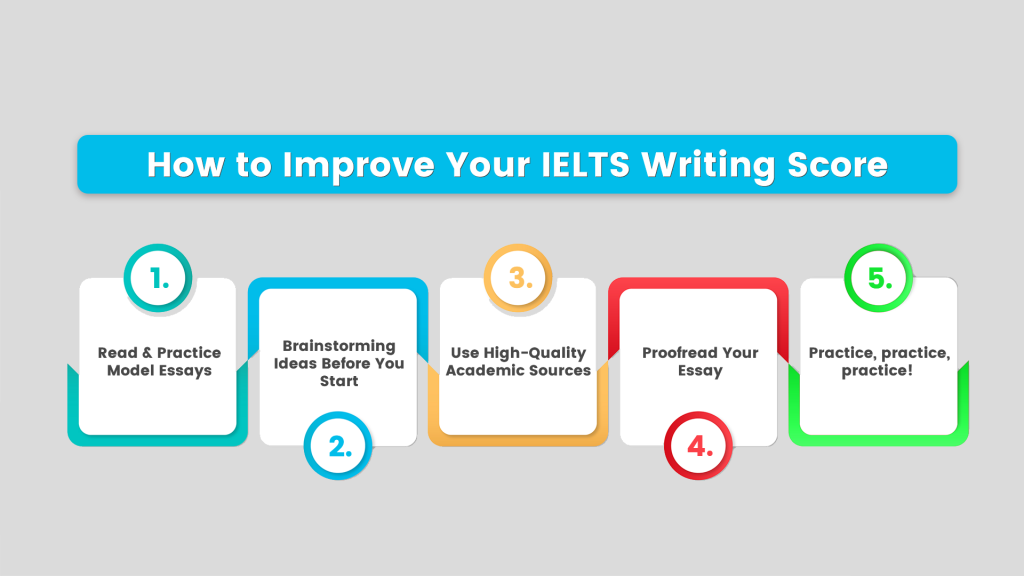
In order to ace the IELTS writing test, you need to practice, practice, practice. And that means working on your writing skills on a regular basis.
But it’s not just about practicing the actual writing task. You also need to be familiar with the types of questions that will be asked. So make sure you spend some time reading the IELTS test instructions carefully.
Equally important is knowing what the marking criteria are. So take a look at the marking grid and make sure you understand how your writing will be graded.
By following these tips, you’ll be well on your way to scoring high on the IELTS writing test!
What Are the Different Types of IELTS Writing Tasks?
In the IELTS writing test, there are two tasks: a task 1 and a task 2.
Task 1 is a report for academic training students , and it usually asks for information about a graph or table. In this task, you need to give a concise summary of the data, as well as describe any trends that you notice.
Task 1 for general training is letter writing and it usually asks to write a situation based letter may be to a friend, manager or boss. The relation with the person to whom you are writing the letter will decide the tone whether it will be a formal or an informal letter
Task 2 is an essay, and it asks for your opinion on a given topic. In this task, you need to develop your argument and provide evidence to support your point of view.
How to Plan and Structure Your IELTS Writing Task
Ok, so you’ve got your task, and now it’s time to plan and structure your essay. Here are a few tips to help you out:
- Plan your essay before you start writing. This means thinking about the main points you want to make and organizing them in a logical order.
- Start with a strong introduction that clearly states your position on the topic.
- Develop your argument using clear and concise points, making sure to support your points with evidence from the text.
- Use a variety of sentence structures to keep your writing interesting and engaging.
- Write a strong conclusion that sums up your argument and leaves the reader with something to think about.
How to Write an IELTS Essay
Now that we’ve covered the basics of IELTS writing, let’s take a look at how to actually write an essay. The best way to learn is by example, so let’s take a look at a sample question and see how we might go about answering it.
The question is: Some people think that the way to be successful is to make as much money as possible. Do you agree or disagree?
When you’re writing your essay, make sure to include your opinion on the matter. You don’t have to agree or disagree with the statement, but you should state your position either way. Here’s an example of how we might write this essay:
I think that the way to be successful is to find something that you’re passionate about and put your heart and soul into it. Money is important, but it shouldn’t be the only thing that drives you. There are many people who are successful without having a lot of money, and I think that’s because they’re doing something they love.
How to Write an IELTS Letter
When it comes to writing letters for IELTS, it’s important to remember that there’s a specific format you need to follow.
The general structure of a letter is usually:
- salutation – Dear sir/mam/john
- Opening paragraph
- Detailing paragraph(s)
- Closing sentence
- Signature
Within each of these sections, there are specific things you need to include. Let’s take a closer look. The opening paragraph should introduce the topic of your letter, and the main paragraph(s) should provide more detail. The closing sentence should thank the recipient for their time, and the signature should be your name followed by your signature.
IELTS Writing Task 1 – Academic
The 1st Task of the Academic Writing Module asks you to describe and summarise some information presented in a visual format (chart, table, graph or diagram) in about 20 minutes. Students, for this task, must write at least 150 words.
The Academic Writing Task 1 can be of the following types:
Types of Diagram What does it mean? Line Graph Shows Trend Bar Chart Shows Comparison Pie Chart Shows Contribution Table show any of the functions mentioned above Process Diagram or Flow Chart Shows Stepwise information Picture or Map Shows image IELTS Writing Task 1 Academic Answer Structure
For a high band score in Academic Writing Task 1, the students must structure their answers. First, we will look at a high band score answer structure for the first four categories mentioned above like Line Graph, Bar Chart, Pie Chart, & Table. Because the answer structure for a process or flow chart or a picture is different.
The students can structure their answers for the first four categories as below;
Paragraph Structure Opening Paragraph one paragraph consisting of 1 – 2 sentences explaining what you will describe. An Overview 1-2 Statements interpreting the key or significant features of the graph/map/process/picture Body The body structure may have a minimum of 2 paragraphs depending on the question asked, but they should not be more than 4. The students must answer the examiner’s demands in the body part. IELTS Writing Mistakes to Avoid
Are you preparing to take the IELTS Writing Exam? If so, you need to be aware of the most common mistakes people make.
One of the biggest mistakes is not paying attention to the task instructions. Make sure you read the question carefully and understand what’s being asked. Sometimes people try to be too clever and they end up writing something that’s completely irrelevant to the topic.
Another mistake is not organizing your thoughts properly. When you’re writing a paragraph, it’s important to have a clear idea of what you want to say and how you want to say it. Rambling on and on without any structure will only confuse the reader.
And finally, don’t forget to proofread your work! A lot of people make mistakes because they don’t bother to check their work for mistakes. This is a BIG mistake, because it can cost you marks in the final score.
Sample IELTS Writing Tasks
If you’re looking to improve your IELTS writing score, one of the best things you can do is practice. And what better way to practice than by working on sample tasks?
In this section, we’ve provided a range of sample tasks to help you get started. These tasks cover a variety of different topics, so you can get a feel for the different types of questions that come up in the test.
We’ve also included some tips and advice to help you start tackling these tasks. So don’t waste any time—get started today and see how much your score improves!
Conclusion
Congratulations on deciding to take the IELTS writing test! This document is designed to provide you with all the information you need to get a great score.
Inside, you will find:
- An introduction to the IELTS writing test
- The format of the writing test
- Advice on how to approach the task types
- Detailed guidance on how to generate ideas and write essays for each task type
- Sample answers to each task type
- Useful language for academic writing
- A glossary of terms
- Tips for improving your writing skills
You will also find a number of exercises to help you practice and improve your score. The more you practice, the better your score will be. Good luck!
[carousel_slide id=’16536′]



